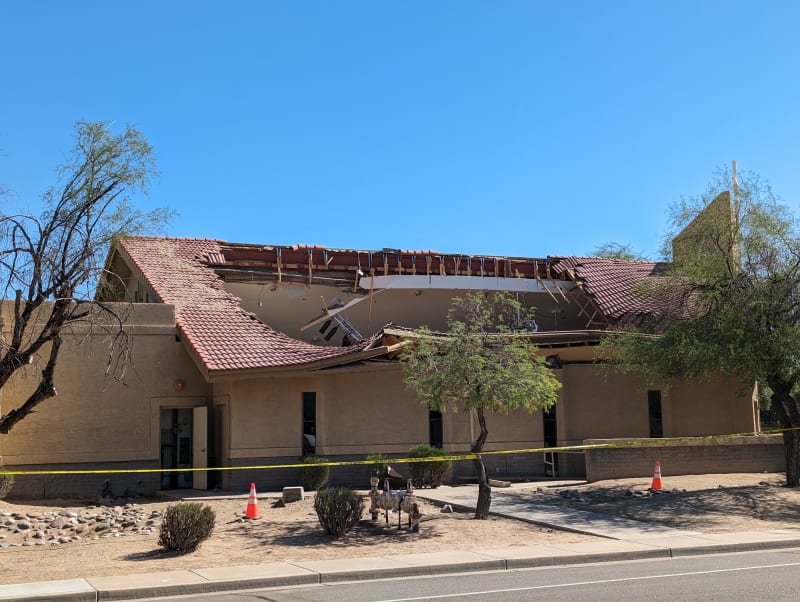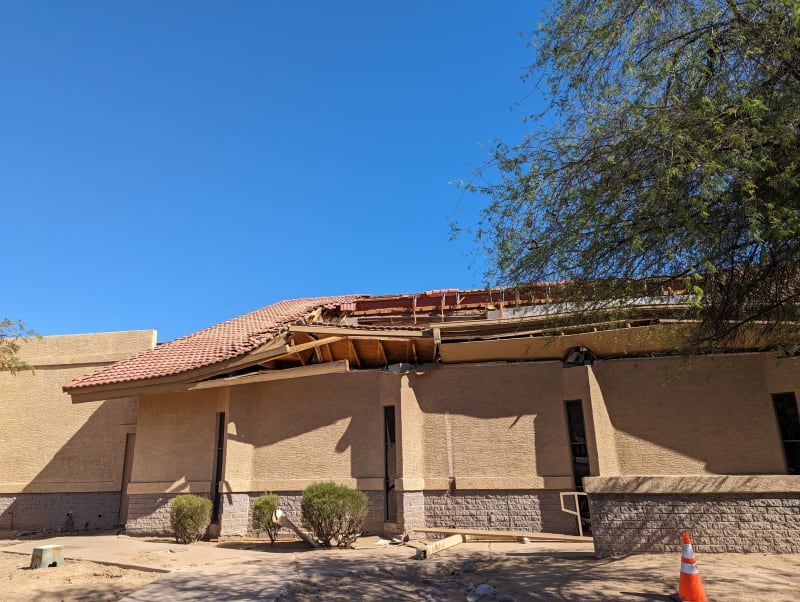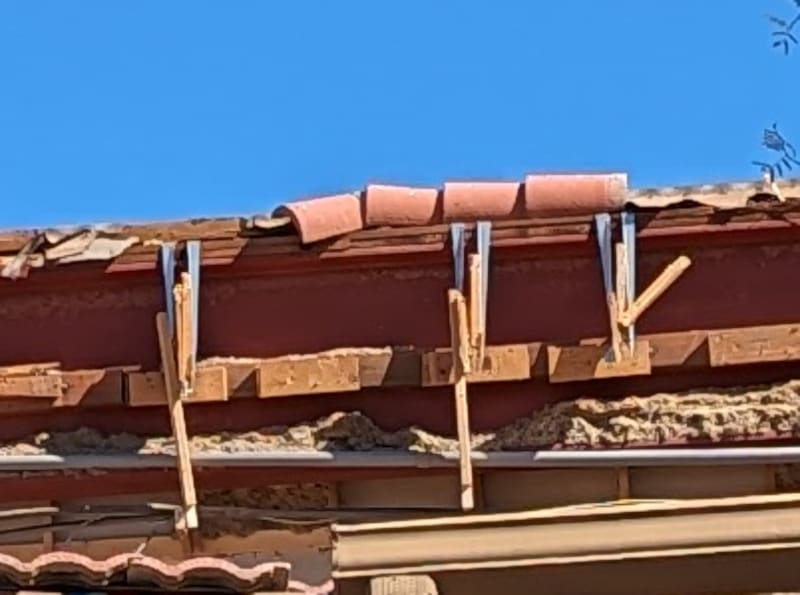Navigation
Install the app
How to install the app on iOS
Follow along with the video below to see how to install our site as a web app on your home screen.
Note: This feature may not be available in some browsers.
More options
Style variation
-
Congratulations TugboatEng on being selected by the Eng-Tips community for having the most helpful posts in the forums last week. Way to Go!
You are using an out of date browser. It may not display this or other websites correctly.
You should upgrade or use an alternative browser.
You should upgrade or use an alternative browser.
Church Roof Collapse 1
- Thread starter azcats
- Start date
- Status
- Not open for further replies.
EdStainless
Materials
We were having this discussion after band practice this last week.
We actually weighed lights and the newer LED ones are a bit lighter, but not as much as you might think.
Most of them contain the power supply and some level of motorized controls for beam spread and/or pan.
We are looking at an LED wall panel, and the thing is 5-6,000 pounds.
We are in an old Walmart, so you know that there is zero margin in the trusses and columns.
Going to take some work,
= = = = = = = = = = = = = = = = = = = =
P.E. Metallurgy, consulting work welcomed
We actually weighed lights and the newer LED ones are a bit lighter, but not as much as you might think.
Most of them contain the power supply and some level of motorized controls for beam spread and/or pan.
We are looking at an LED wall panel, and the thing is 5-6,000 pounds.
We are in an old Walmart, so you know that there is zero margin in the trusses and columns.
Going to take some work,
= = = = = = = = = = = = = = = = = = = =
P.E. Metallurgy, consulting work welcomed
bones206 (Civil/Environmental) 31 Oct 23 18:02 said:The trusses seemed to have some kind of plywood reinforcing gusset at the ends supported at the ridge.
My guess is that the plywood is a filler for the truss hanger while also doubling as a support connection for the box framing around the beam. It is not well connected to the truss so gusset isn't likely. It seems peculiar but solutions are sometimes just that. The vertical for the box framing looks like a 2x6 with a notch at the bottom for the longitudinal 2x4's.
A simple pin connected truss diagram demonstrates the highest compression loaded member extending from the lower support. If inference can be made that as a result node one has the highest propensity for deflection, this model would align with the failure mode of the church trusses where the the eave extensions are pushed opposite the top chord deflection by leverage of the support connection.
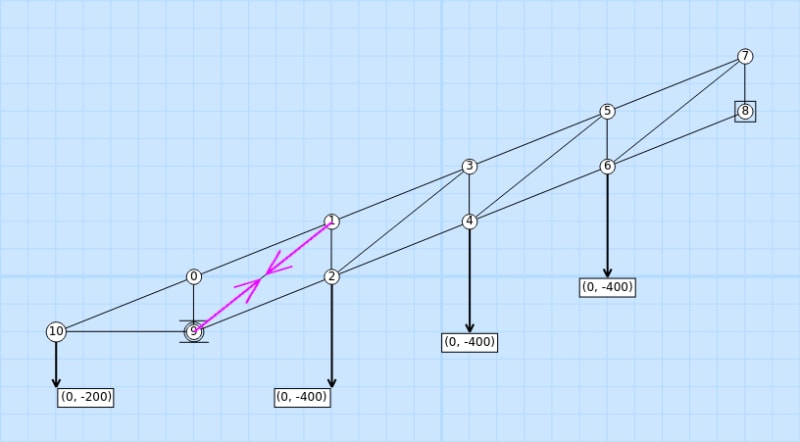
I would even venture a suggestion that the two trusses indicated below are the two sinners that set off this calamity given the similarity of the eave deflection and damages at the roof line. It would be interesting to see some drone footage of how the roof landed.
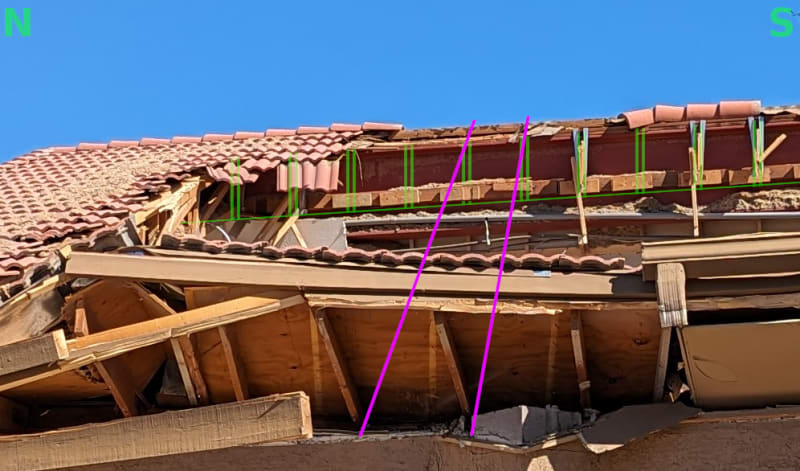
The plywood could be a filler, but that would mean the incorrect size was used for the hangers. It might make some sense if it was a reinforcement gusset added after initiate construction. I’ve just never seen that for a new construction detail.
Alistair_Heaton
Mechanical
I used plywood strips to level the battens so everything was flat for the roof sheet to go on.
I am certainly no expert on rafter roofs and it may be due to lack of skill but there is always some low spots you need to raise to give an even final surface.
I presume these truss roofs are the same.
They might also be something to do with the mounting of the ridge cap so it can't slip sideways.
I am certainly no expert on rafter roofs and it may be due to lack of skill but there is always some low spots you need to raise to give an even final surface.
I presume these truss roofs are the same.
They might also be something to do with the mounting of the ridge cap so it can't slip sideways.
Those look like TJI hangers to me (Simpson ITS Hanger). The smallest width seat available is 1.81" for light duty I-Joists with 1.75" flanges. So using a piece of .25" ply as filler wouldn't surprise me - Simpson allows it on other hangers if designed by an engineer or architect.
The hanger doesn't look to be the problem, though. After all, remnants of the truss are still attached to the hangers.
The hanger doesn't look to be the problem, though. After all, remnants of the truss are still attached to the hangers.
bones206 said:There is one section where all the hangers are gone
So there is...
As long as it's fastened correctly to the truss, I agree it wouldn't be a problem. Also difficult to tell if the hangers failed because the hanger failed, or if it was ripped down when the roof fell.
I wonder, though, if by putting that filler in and fastening it if they altered the truss too much and created a pseudo fixed-end condition?
The plywood filler is between the side of the truss and the hanger, i.e. the hangar pocket is too wide. The vertical truss element fitting in the hangar is edgewise standard dimensional lumber, so 1.5" thick. The plywood looks to be full height of the truss so it provides solid fill between the hanger and truss.
The mat'l behind the truss, filling in the beam web space, looks to be three layers of dimensional lumber, i.e. 4.5" thick.
One oddity I pointed to earlier is a recess cut into one of the backing blocks. It might be a flag to a bigger issue at that location.
The mat'l behind the truss, filling in the beam web space, looks to be three layers of dimensional lumber, i.e. 4.5" thick.
One oddity I pointed to earlier is a recess cut into one of the backing blocks. It might be a flag to a bigger issue at that location.
Here is a zoomed in look at those gussets. I agree that the connection failures could easily be a symptom of the collapse rather than the initial failure point. I think it looks more like global truss failure occurred first and the hangers got twisted and ripped off.
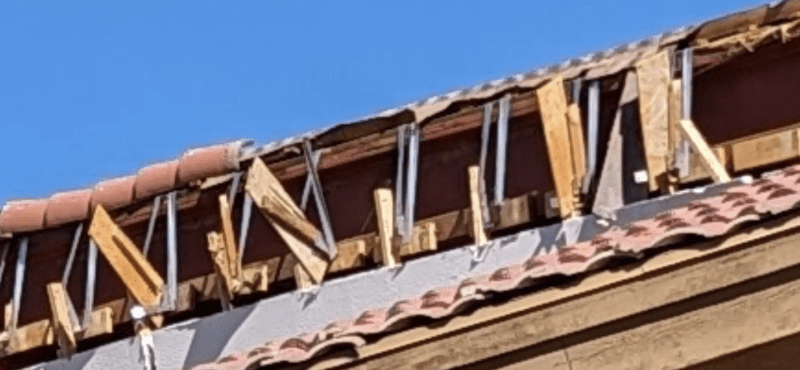

Facebook said:... the building was already closed because it was expected to collapse so no one was allowed inside.
From Google Street View, March 2022, the roof is visibly sagging at the north end.
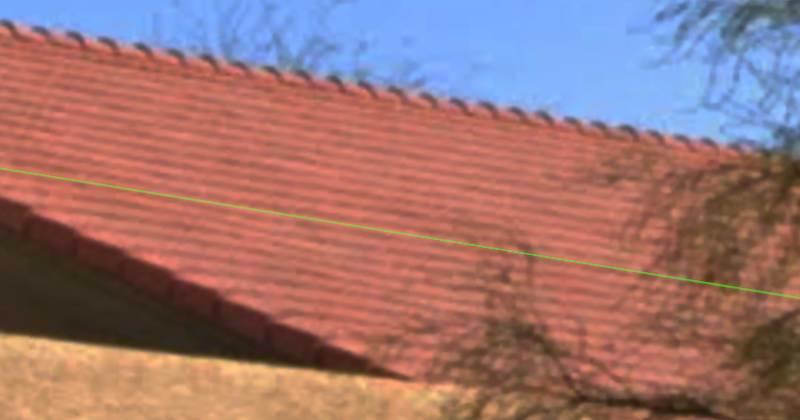
I don't see roof cavity ventilation, though it may be incorporated in gable features. No ventilation that I can see in the eaves either.
(Edited to change "south end" to "north end")
Alistair_Heaton
Mechanical
to be honest if the issue had been spotted prior to collapse and actions taken to prevent harm....
I see it as a success dealing with a failure.
I see it as a success dealing with a failure.
Buckling was mentioned earlier in the thread and I think there is some evidence of that. The first photo marked up by Sym P. le shows a truss on the left side possibly in a buckled mode shape. Many of the hangers appear to have the same twist/skew angle as well. I took this snip from an SJI presentation, but it illustrates the global buckling mechanism pretty well.


- Thread starter
- #57
Alistair Heaton said:to be honest if the issue had been spotted prior to collapse and actions taken to prevent harm....
I see it as a success dealing with a failure.
You know - the second and third photos in my OP were taken within minutes of the collapse. Before police or fire arrived due to alarm. And there were already those cones out there. Wonder if there was some evidence of impending failure.
The first pic was taken later and you can see the caution tape there.
Alistair said:tug they would have included the roofing type in the dead load calculations for rafter specification.
You never know, especially given the roof has collapsed.
Alistair_Heaton
Mechanical
I did wonder if there had been a change in roofing type.
Is there a more expensive lighter option that could have been specified but then swapped later during construction?
Is there a more expensive lighter option that could have been specified but then swapped later during construction?
- Thread starter
- #60
[URL unfurl="true"]https://www.fox10phoenix.com/news/roof-of-chandler-church-building-collapses[/url]
This came across my feed this morning.
This came across my feed this morning.
- Status
- Not open for further replies.
Similar threads
- Replies
- 20
- Views
- 17K
- Replies
- 0
- Views
- 1K
- Replies
- 13
- Views
- 13K
- Replies
- 18
- Views
- 1K
- Replies
- 74
- Views
- 3K

